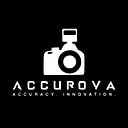AI Generative Fill in Photography: Blending Art with Advanced Technology
In the ever-evolving landscape of photography and digital art, AI generative fill technology stands out as a revolutionary tool, reshaping how we approach image creation and editing. This cutting-edge technology, which uses artificial intelligence to fill in or reconstruct parts of a photograph, is not just a technical marvel but also a creative boon for photographers and digital artists. In this article, we will explore the implications and applications of AI generative fill in photography, offering insights into how it’s changing the game in digital imagery.
Understanding AI Generative Fill
AI generative fill works by using complex algorithms to analyze and replicate the style, texture, and lighting of existing images. It’s capable of filling gaps, reconstructing missing parts, and seamlessly blending the generated content with the original. This technology leverages deep learning models, particularly Generative Adversarial Networks (GANs), to understand and replicate the style, texture, and lighting of the original image with a high degree of accuracy.
Transforming the Art of Photography
- Restoration and Preservation: AI generative fill can be a powerful tool for restoring old or damaged photographs. It can reconstruct lost elements, remove blemishes, and bring historical photos back to life.
- Creative Expression: For artists and photographers, this technology opens up new avenues for creative expression. It allows for the creation of surreal, imaginative scenes by blending reality with AI-generated content.
- Time and Resource Efficiency: In the past, digital reconstruction or manipulation required significant time and skill. AI generative fill simplifies this process, making it more accessible and efficient.
- Ethical Considerations and Authenticity: As with any powerful tool, there is a need for ethical considerations. The ability of AI to alter images so convincingly raises important questions about authenticity, misinformation, and the ethical use of technology in art. It’s crucial for photographers and artists using AI to maintain transparency about their use of such technology, especially in genres that rely on the authenticity of imagery, such as photojournalism and documentary photography.
Practical Applications in Various Fields
- Photographic Editing and Manipulation: From professional retouching to creative compositions, AI generative fill can be used to enhance or alter photographs in ways previously not possible.
- Fashion and Product Photography: In these fields, AI can be used to fill in or alter backgrounds, adjust product images, or create consistent visual styles without the need for extensive photoshoots.
- Cinematography and Visual Effects: AI generative fill can be used in post-production to alter scenes, add elements, or fix issues in footage.
- Heritage and Archival Work: For historians and archivists, this technology offers a potent tool for preserving and restoring historical photographs, providing a digital means to safeguard our visual history.
Engaging with AI in Photography
While AI generative fill technology is a powerful tool, it’s important to maintain a balance between technological possibilities and artistic integrity. The aim should be to use AI as an extension of the photographer’s vision, rather than a replacement of the creative process.
- Start with Experimentation: Familiarize yourself with AI tools and experiment with different features to understand their capabilities and limitations.
- Balance AI with Artistic Vision: Use AI as a tool to enhance, not replace, your creative vision. Let your artistic intuition guide how you use technology.
- Stay Informed About Ethical Practices: Keep abreast of the ethical guidelines and debates surrounding AI in photography. Ensure that your use of AI is transparent and responsible.
- Continual Learning and Adaptation: The field of AI is rapidly evolving. Stay curious and open to learning, adapting your techniques as new advancements emerge.
In conclusion, AI generative fill in photography is a testament to the incredible advancements at the intersection of technology and art. It is more than just a technological advancement; it’s a new frontier in the world of digital imagery. It challenges traditional notions of photography and opens up a universe of possibilities for creative and restorative work. As we embrace this new era, it’s essential to harness these technologies with a sense of artistic integrity and ethical responsibility, ensuring that the art of photography continues to evolve in ways that are both innovative and respectful of its core values.
#AIPhotography #GenerativeFill #DigitalImaging #CreativeArt #PhotographyInnovation #TechInArt #ImageRestoration #PhotographyFuture #AIInArt #DigitalManipulation #PhotoEditing #VisualEffects #ArtisticExpression #TechnologyInPhotography #ImaginativePhotography #AIRevolution #DigitalArtwork #ModernPhotography #CreativePossibilities #EthicalPhotography #Accurova #AccurovaAI #VisualStorytelling #PhotographyTrends #FutureOfPhotography #TechTrendsInArt #CuttingEdgePhotography #InnovativePhotography #AIAndCreativity
